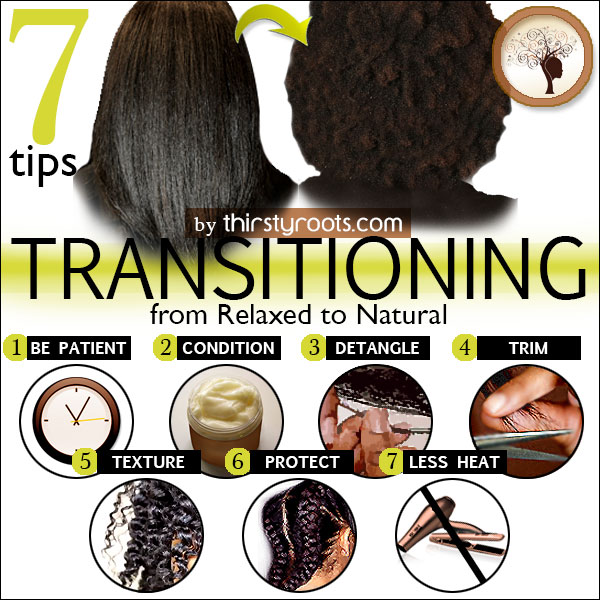
Transitioning from relaxed to natural hair means to gradually cut off the straighten chemically processed hair as the new growth develops. If you do not want to do the “big chop” and cut the relaxed ends off all at once, then below are some great tips to help you begin the transitioning journey of returning to au naturale.
7 Tips to Begin Transitioning from Relaxed to Natural Hair
Tip 1: Be Patient
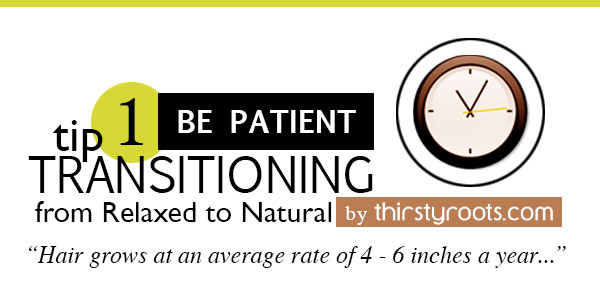
Hair grows at an average rate of 4 – 6 inches a year, which means patience is a big part of growing out your natural hair. You must understand that this process will not be easy. Learn to embrace you natural texture.
Initially you may not see your true hair texture due to scab hair, which is rough and wiry hair in result of the chemical residue working its way out of the scalp.
At times you will get frustrated with dealing with the two different textures. You have to work through that frustration in order to achieve the goal to natural hair. Stay committed in learning how to manage your hair before throwing in the towel; it takes time to see results.
Tip 2: Condition
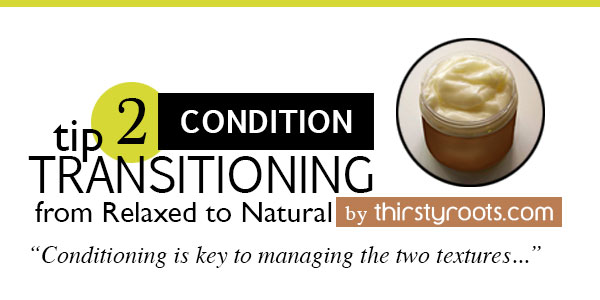
Conditioning is key to managing the two textures and preventing breakage. You want to deep condition at least once a week and you will notice a change in your new growth and hair’s manageability after about 6 – 8 weeks.
On top of deep conditioning, make sure you keep your tresses moisturized to prevent your strands from breaking off at the demarcation line, the point at which the relaxed hair meets the natural hair.
Key staple products to have: deep conditioner, leave-in conditioner, moisturizer, hair oil.
Tip 3: Detangle
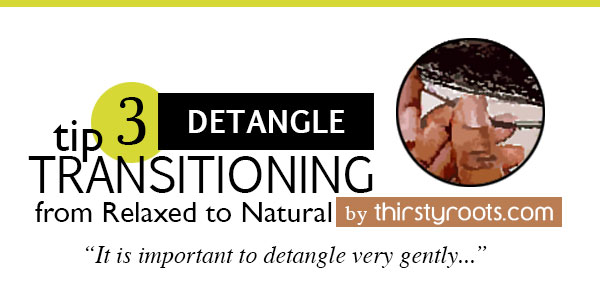
It is important to detangle very gently, and set aside time to get through wash day. It is best to detangle your hair prior to shampooing. Dry hair snaps very easily so make sure you do not use harsh shampoos that overly strip the hair from its natural oils.
When you detangle, make sure your hair is saturated with a detangling cream or conditioner to avoid breakage at the demarcation line.
Finger detangling is a great way to keep the breakage down, but unfortunately it is a bit time consuming. If you use a comb, make sure the teeth are wide and always comb out the hair starting from the ends and work your way up to the roots.
Tip 4: Trim
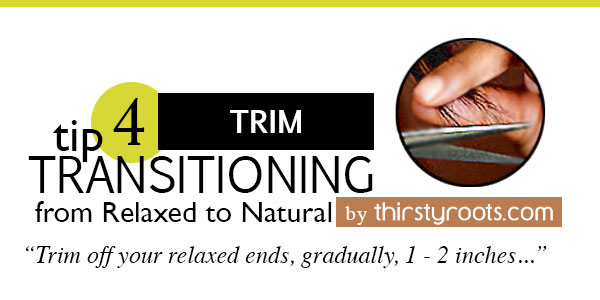
In order to make progress to fully natural locks, you must trim off your relaxed ends, gradually, 1 -2 inches every two months or at your on preference. Trimming consistently, also helps prevent split ends to travel up the shaft and cause damage to your new growth and natural hair.
Tip 5: Texture
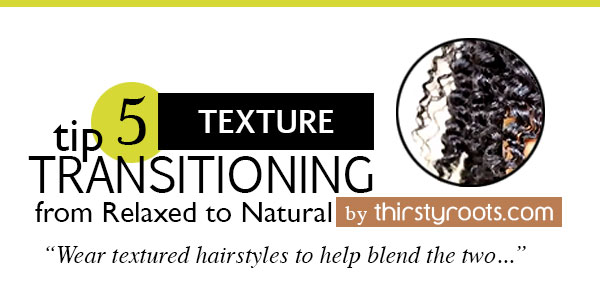
Wear textured hairstyles to help blend the two textures. Hair styling can be an issue with both straight and curly strands on the same head.
Textured hairstyles are styles that have some sort of curl or wavy pattern to it. Braid outs, twist outs, rod sets, and straw sets are great hairstyles to blend the curly with the straight.
Tip 6: Protect
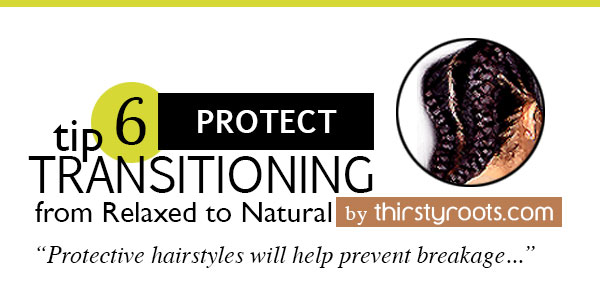
During this journey it is import to keep down manipulation, combing and pulling, when it comes to your hair. Protective hairstyles will help prevent breakage by keeping the ends of your hair tucked away for longer periods of time.
However, you do not want to keep the hair tucked too long or you will end up with matted dreadfully tangled hair. Also make sure when wearing these protective hairstyles, you do not pull too tightly when installing styles such as braids, buns, and ponytails.
Some examples of these protective creations are cornrows, braids, buns, flat twists, wigs, sew-ins, etc.
Tip 7: Less Heat
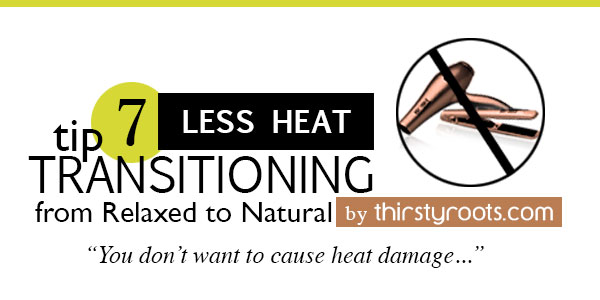
It is imperative that you understand you must stay away from heat as much as possible. You don’t want to cause heat damage while you are trying to grow out healthy strong hair.
Direct heat from flat irons, curling irons, blow dryer, etc can be detrimental to your transitioning journey, especially if used too often or incorrectly. If you blow dry, try using cooler settings, the tension method, or use a hooded dryer on medium heat (or lower) for a short period of time to set styles.
An alternative to using heat to straighten or stretch your hair, is to use the banding method of which you use elastic hair bands in small sections to stretch out textured hair.



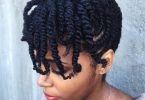
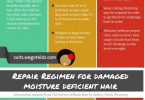
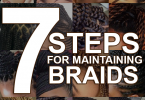
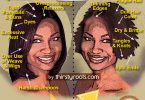

I decided to forego the chemical process and grow out my hair naturally with weaves and braids. My perm has finally grown out and Im still in braids and condtion my hair very well between each brading process but my hair is still dry and my braids get frizzy after about 2 weeks. I live in Arizona were the temps are consistenly in the 3 digit range from June-October. I also sweat a lot in my scalp and my hair grows verly slowly due to my hypothyrodism condition. Although I dont drink 8 glasses of water per day, I recently lost 20 lbs so my diet is better than it was previously.I’ve taken biotin, multivitamins and hair pills for grown over several, several months but I really dont see noticeable results.
Question: How do I hydrate and keep my braids shiny as I continue to wear my braids, and control the frizz. I would like to keep them up at least 3 months (with at least one touch up in between), so they will look well maintained. Are essential hair oils the answer ? HELP!!
PS: What other hair styles can you suggest ffor natural hair….locks maybe??